Wideband Omnidirectional Antenna Featuring Small Azimuthal Gain Variation
Abstract
:1. Introduction
2. Materials and Methods
3. Results
3.1. Bandwidth Expansion and Radiation Pattern Control Mechanisms and Simulation Results
- Wideband Impedance Matching Mechanism
- Side lobe Suppression
- Current distribution of the antenna
- Ground shape and size choice.
3.2. Time Domain Analysis
3.3. Measurement Results and Discussion
4. Discussion
5. Conclusions
Author Contributions
Funding
Data Availability Statement
Conflicts of Interest
References
- Fu, C.; Feng, C.; Chu, W.; Yue, Y.; Zhu, X.; Gu, W. Design of a Broadband High-Gain Omnidirectional Antenna with Low Cross Polarization Based on Characteristic Mode Theory. IEEE Antennas Wirel. Propag. Lett. 2022, 21, 1747–1751. [Google Scholar] [CrossRef]
- Zhang, Z.-Y.; Leung, K.W.; Lu, K. Wideband High-Gain Omnidirectional Biconical Antenna for Millimeter-Wave Applications. IEEE Trans. Antennas Propag. 2023, 71, 58–66. [Google Scholar] [CrossRef]
- Solanki, R. Third- and Fifth-Order Mode Compression of a Dipole Antenna. IEEE Trans. Antennas Propag. 2022, 70, 12294–12298. [Google Scholar] [CrossRef]
- Svezhentsev, A.Y.; Volski, V.; Yan, S.; Soh, P.J.; Vandenbosch, G.A.E. Omnidirectional Wideband E-Shaped Cylindrical Patch Antennas. IEEE Trans. Antennas Propag. 2016, 64, 796–800. [Google Scholar] [CrossRef]
- Fan, Y.; Quan, X.; Pan, Y.; Cui, Y.; Li, R. Wideband Omnidirectional Circularly Polarized Antenna Based on Tilted Dipoles. IEEE Trans. Antennas Propag. 2015, 63, 5961–5966. [Google Scholar] [CrossRef]
- Dubrovka, F.F.; Piltyay, S.; Movchan, M.; Zakharchuk, I. Ultrawideband Compact Lightweight Biconical Antenna with Capability of Various Polarizations Reception for Modern UAV Applications. IEEE Trans. Antennas Propag. 2023, 71, 2922–2929. [Google Scholar] [CrossRef]
- Rostomyan, N.; Ott, A.T.; Blech, M.D.; Brem, R.; Eisner, C.J.; Eibert, T.F. A Balanced Impulse Radiating Omnidirectional Ultrawideband Stacked Biconical Antenna. IEEE Trans. Antennas Propag. 2015, 63, 59–68. [Google Scholar] [CrossRef]
- Li, M.; Behdad, N. A Compact, Capacitively Fed UWB Antenna with Monopole-Like Radiation Characteristics. IEEE Trans. Antennas Propag. 2017, 65, 1026–1037. [Google Scholar] [CrossRef]
- Navarro-Méndez, D.V.; Carrera-Suárez, L.F.; Antonino-Daviu, E.; Ferrando-Bataller, M.; Baquero-Escudero, M.; Gallo, M.; Zamberlan, D. Compact Wideband Vivaldi Monopole for LTE Mobile Communications. IEEE Antennas Wirel. Propag. Lett. 2015, 14, 1068–1071. [Google Scholar] [CrossRef]
- Nikolaou, S.; Abbasi, M.A.B. Design and Development of a Compact UWB Monopole Antenna with Easily-Controllable Return Loss. IEEE Trans. Antennas Propag. 2017, 65, 2063–2067. [Google Scholar] [CrossRef]
- Qin, D.; Sun, B.; Zhang, R. VHF/UHF Ultrawideband Slim Monopole Antenna with Parasitic Loadings. IEEE Antennas Wirel. Propag. Lett. 2022, 21, 2050–2054. [Google Scholar] [CrossRef]
- Heydari, B.; Afzali, A.; Goodarzi, H.R. A New Ultra-Wideband Omnidirectional Antenna [Antenna Designer’s Notebook]. IEEE Antennas Propag. Mag. 2009, 51, 124–130. [Google Scholar] [CrossRef]
- Peyrot-Solis, M.A.; Flores-Leal, R.; Tirado-Mendez, J.A.; Jardon-Aguilar, H. Omnidirectional UWB Antenna for Monitoring Applications at UHF and Microwave Bands. In Proceedings of the 2013 10th International Conference on Electrical Engineering, Computing Science and Automatic Control (CCE), Mexico City, Mexico, 30 September–4 October 2013; pp. 175–178. [Google Scholar]
- Sadiq, M.S.; Ruan, C.; Nawaz, H.; Ullah, S.; He, W. Horizontal Polarized DC Grounded Omnidirectional Antenna for UAV Ground Control Station. Sensors 2021, 21, 2763. [Google Scholar] [CrossRef] [PubMed]
- Tang, H.; Wu, L.; Ma, D.; Li, H.; Huang, J.; Deng, X.; Zhou, J.; Shi, J. Wideband Filtering Omnidirectional Substrate-Integrated Dielectric Resonator Antenna Covering Ku Band. IEEE Antennas Wirel. Propag. Lett. 2023, 22, 1746–1750. [Google Scholar] [CrossRef]
- Zhang, J.L.; Dong, Q.; Wang, W.; Ye, L.H.; Li, J.-F.; Zhang, X.Y. An Ultrawideband Vertically Polarized Omnidirectional Patch Antenna with Low Profile. IEEE Antennas Wirel. Propag. Lett. 2023, 22, 2165–2169. [Google Scholar] [CrossRef]
- Li, J.-Y.; Qi, Y.-X.; Zhou, S.-G. Shaped Beam Synthesis Based on Superposition Principle and Taylor Method. IEEE Trans. Antennas Propag. 2017, 65, 6157–6160. [Google Scholar] [CrossRef]
- Wang, K.; Xiao, Y.; Li, Y.; Liang, Z.; Zheng, S.Y.; Long, Y. A Tapered Continuous-Element Leaky-Wave Antenna with Pure Radiation Pattern. IEEE Antennas Wirel. Propag. Lett. 2021, 20, 1804–1808. [Google Scholar] [CrossRef]
- Crupi, G.; Xiao, D.; Schreurs, D.M.M.-P.; Limiti, E.; Caddemi, A.; De Raedt, W.; Germain, M. Accurate Multibias Equivalent-Circuit Extraction for GaN HEMTs. IEEE Trans. Microw. Theory Tech. 2006, 54, 3616–3622. [Google Scholar] [CrossRef]
- Karahan, E.A.; Liu, Z.; Sengupta, K. Deep-Learning-Based Inverse-Designed Millimeter-Wave Passives and Power Amplifiers. IEEE J. Solid-State Circuits 2023, 58, 3074–3088. [Google Scholar] [CrossRef]
- Tayel, M.B.; Alhakami, H.S. Optimaization of a Wideband Multisection Quadrature Directional Coupler. In Proceedings of the International Conference on Mobile IT Convergence, Gumi, Republic of Korea, 26–28 September 2011; pp. 33–38. [Google Scholar]
- Ghosh, A.; Mandal, T.; Das, S. Design and Analysis of Triple Notch Ultrawideband Antenna Using Single Slotted Electromagnetic Bandgap Inspired Structure. J. Electromagn. Waves Appl. 2019, 33, 1391–1405. [Google Scholar] [CrossRef]
- Khangarot, S.; Sravan, B.V.; Aluru, N.; Mohammad Saadh, A.W.; Poonkuzhali, R.; Kumar, O.P.; Ali, T.; Pai, M.M.M. A Compact Wideband Antenna with Detailed Time Domain Analysis for Wireless Applications. Ain Shams Eng. J. 2020, 11, 1131–1138. [Google Scholar] [CrossRef]
- Addepalli, T.; Desai, A.; Elfergani, I.; Anveshkumar, N.; Kulkarni, J.; Zebiri, C.; Rodriguez, J.; Abd-Alhameed, R. 8-Port Semi-Circular Arc MIMO Antenna with an Inverted L-Strip Loaded Connected Ground for UWB Applications. Electronics 2021, 10, 1476. [Google Scholar] [CrossRef]
- Desai, A.; Kulkarni, J.; Kamruzzaman, M.M.; Hubálovský, Š.; Hsu, H.-T.; Ibrahim, A.A. Interconnected CPW Fed Flexible 4-Port MIMO Antenna for UWB, X and Ku Band Applications. IEEE Access 2022, 10, 57641–57654. [Google Scholar] [CrossRef]

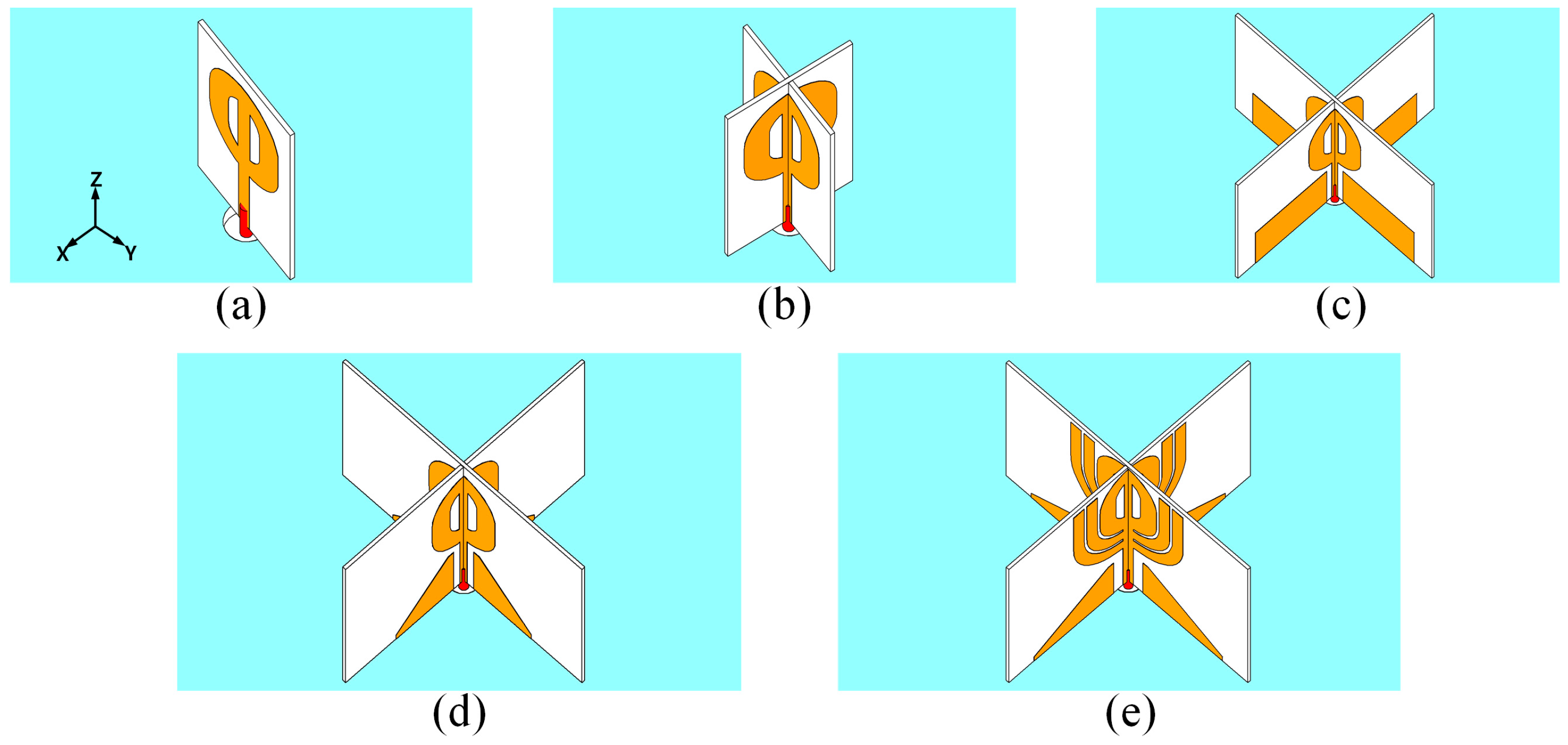

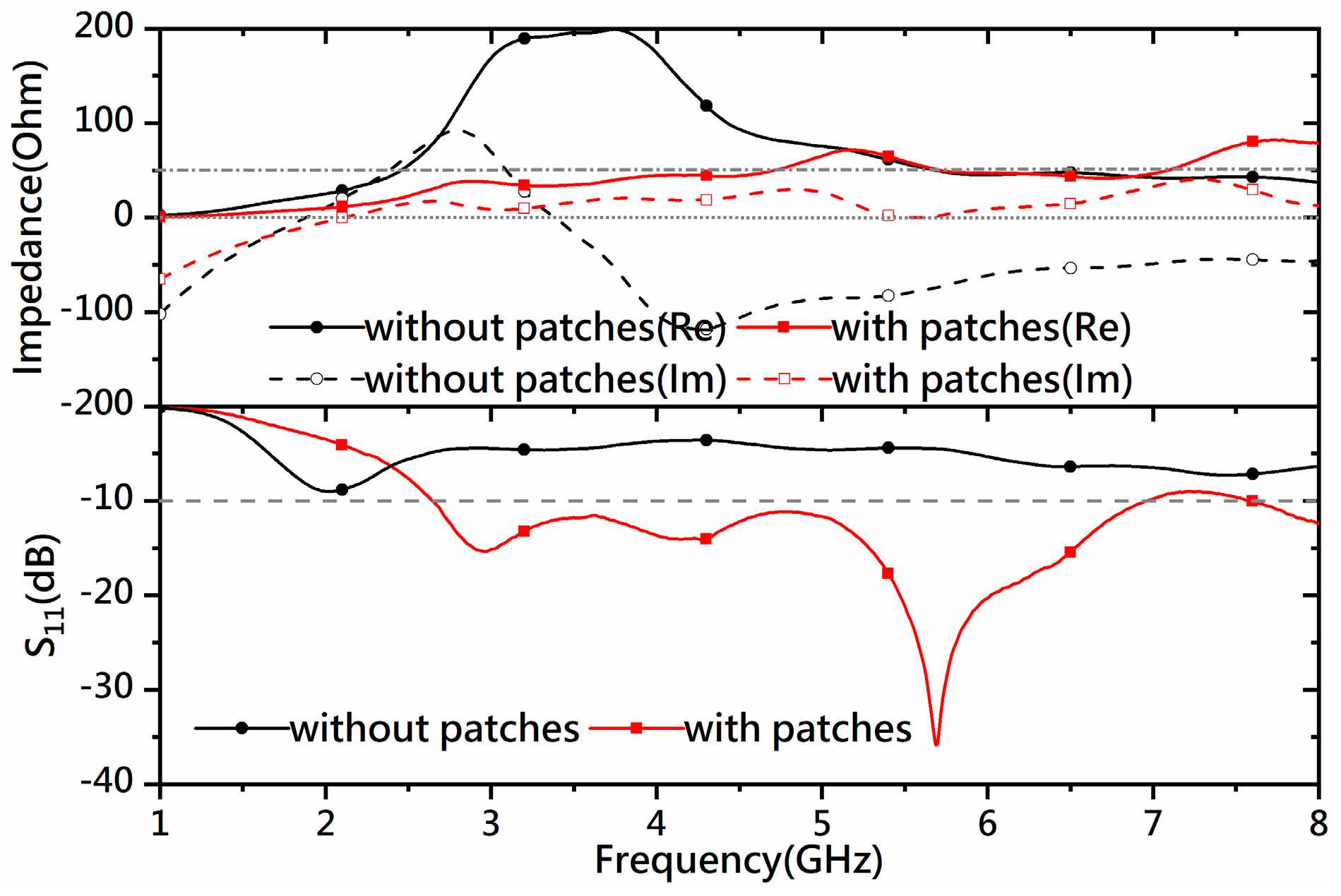


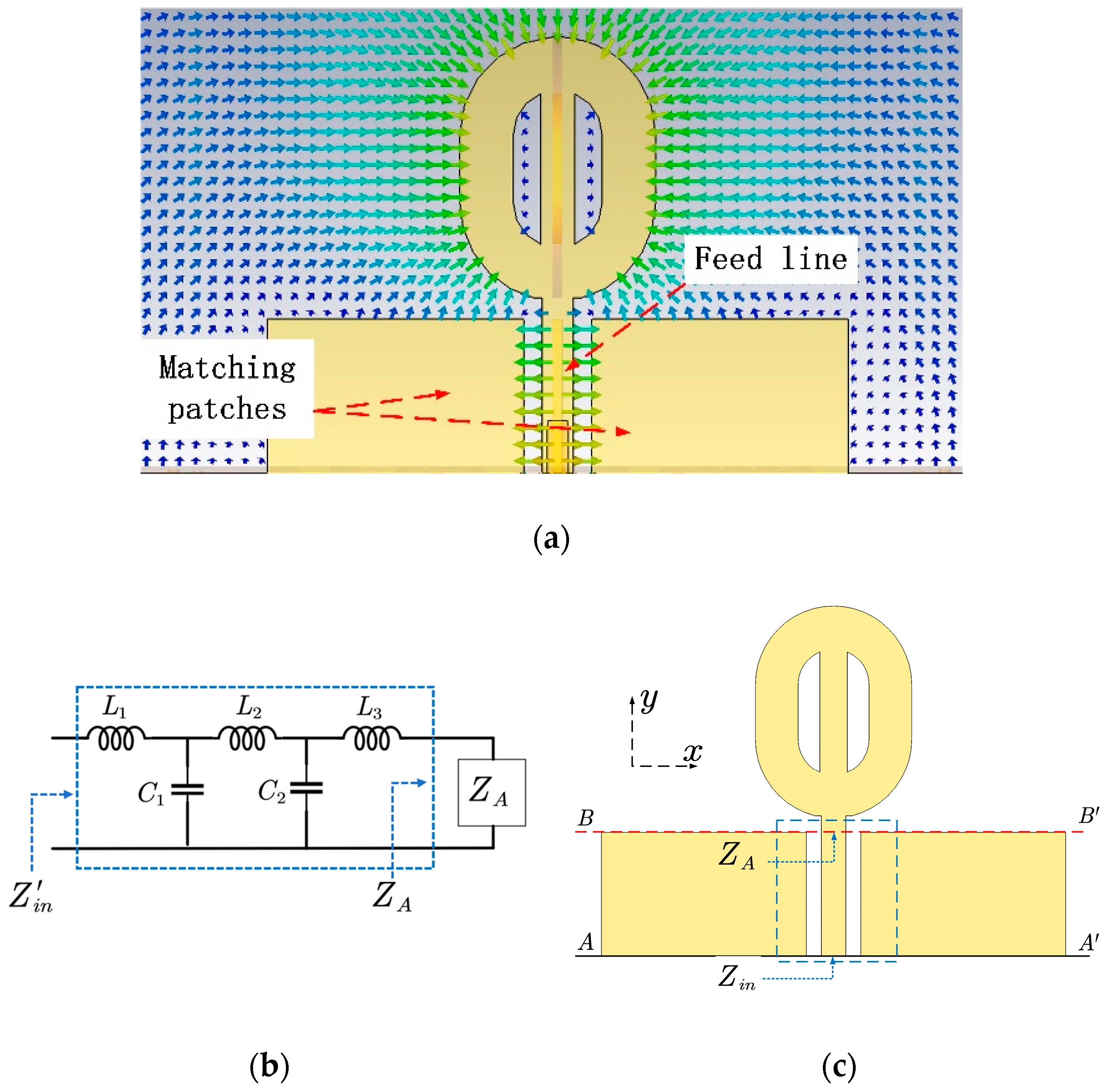
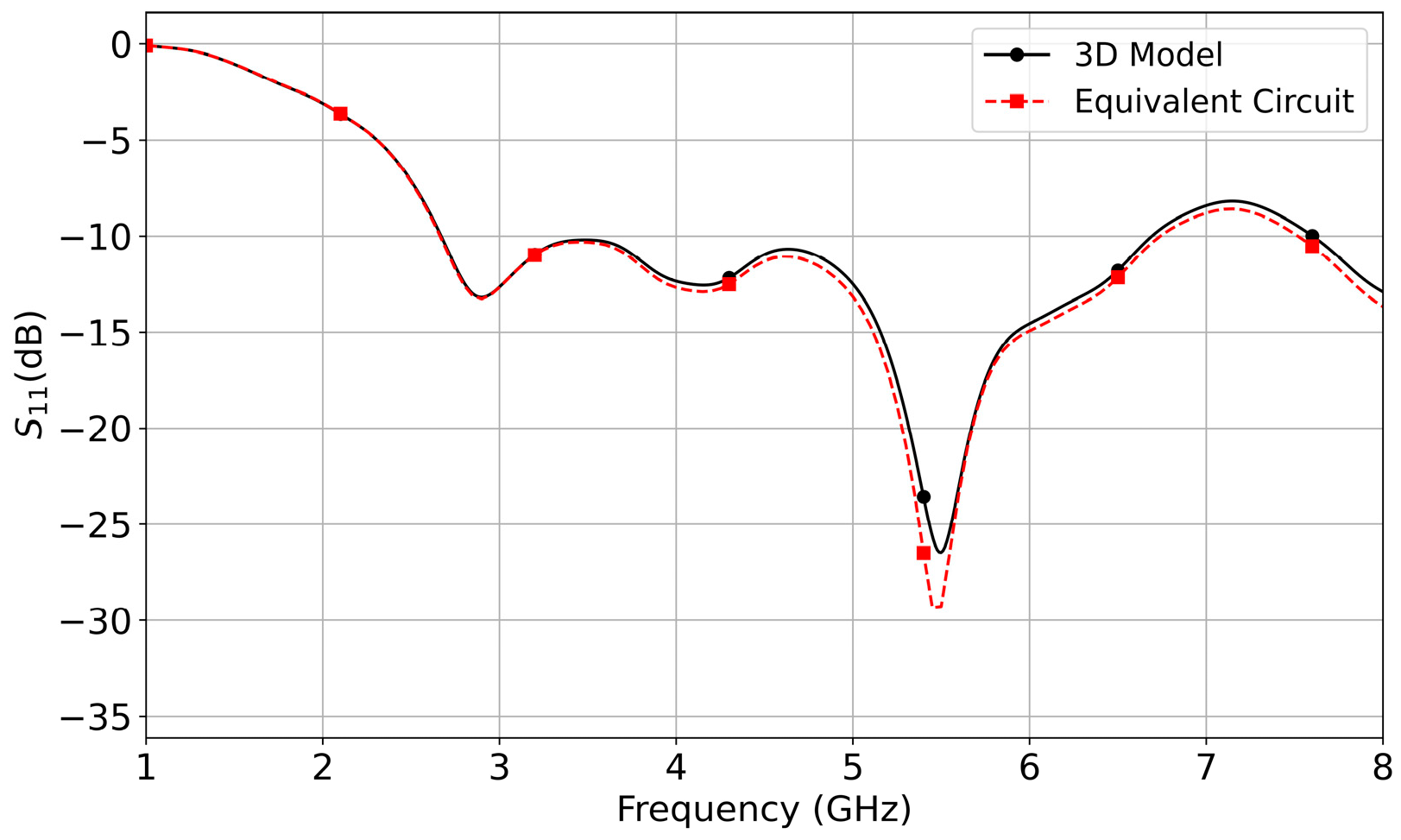




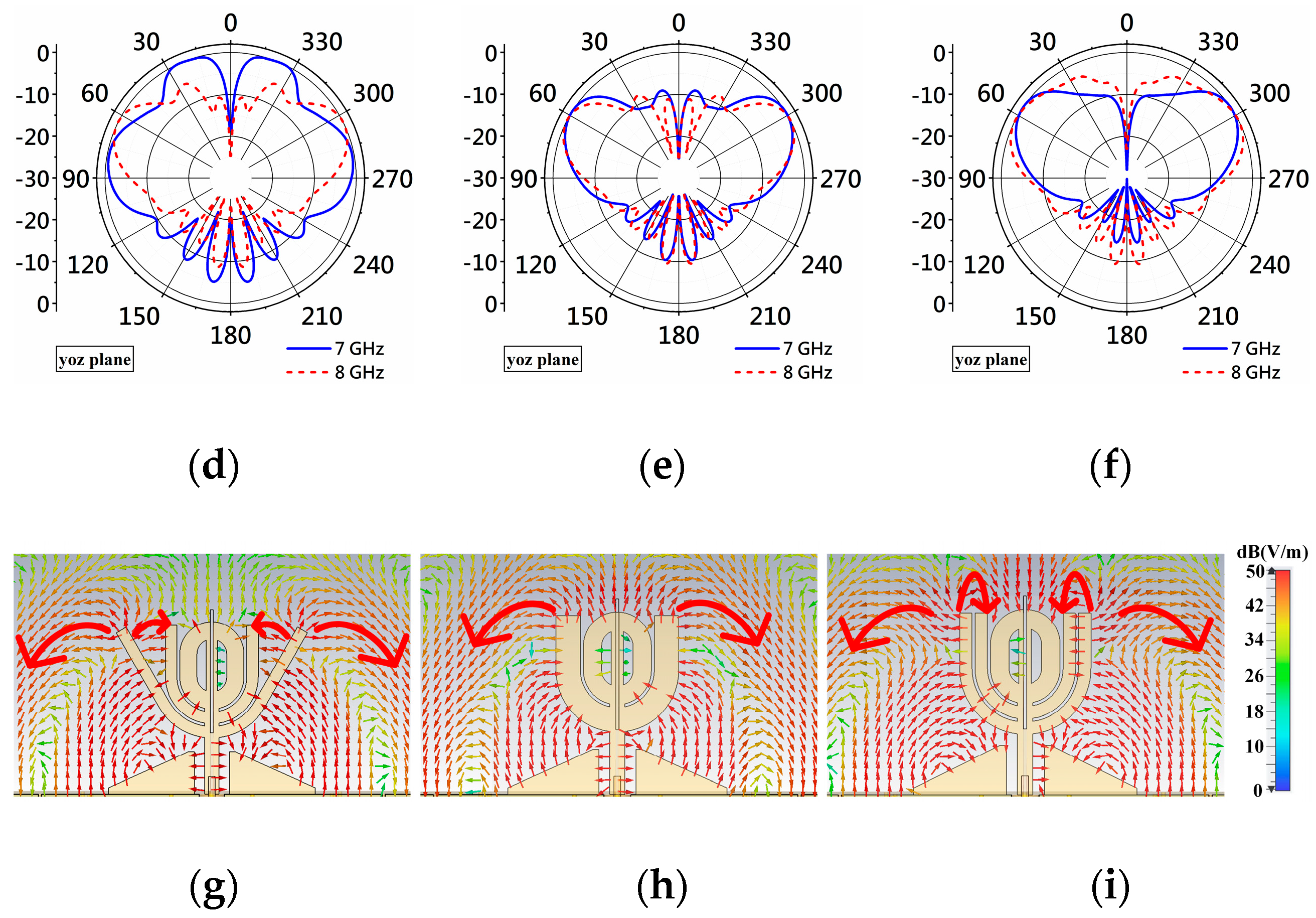
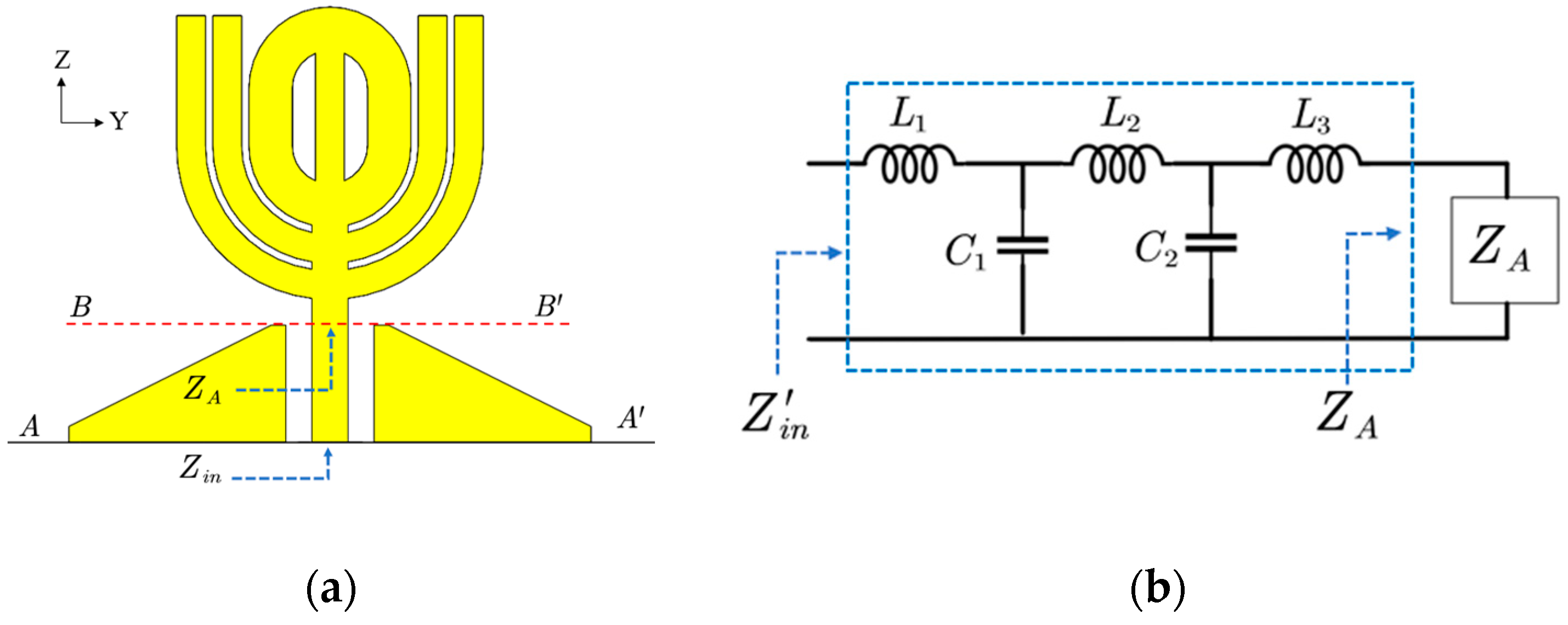
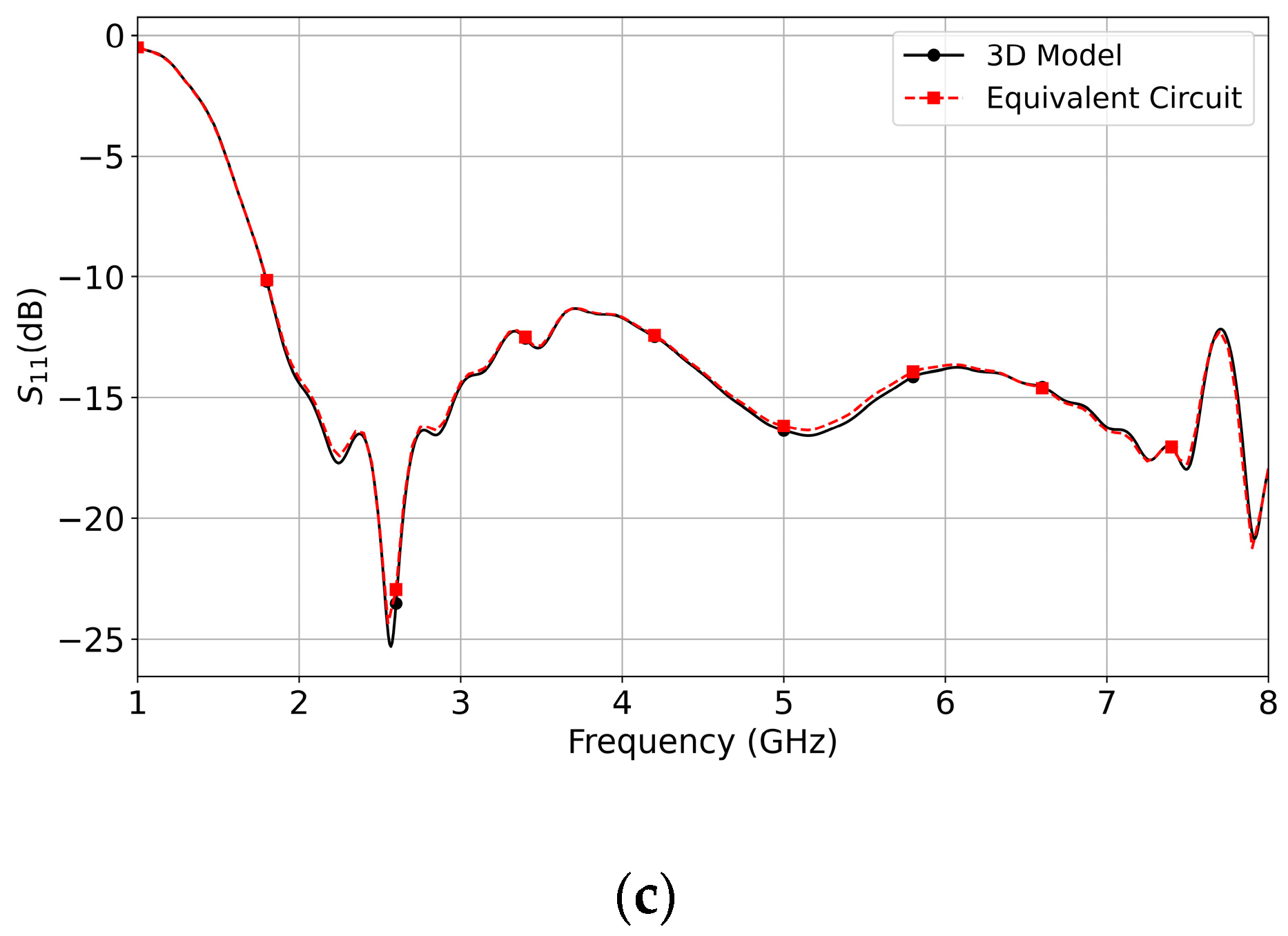
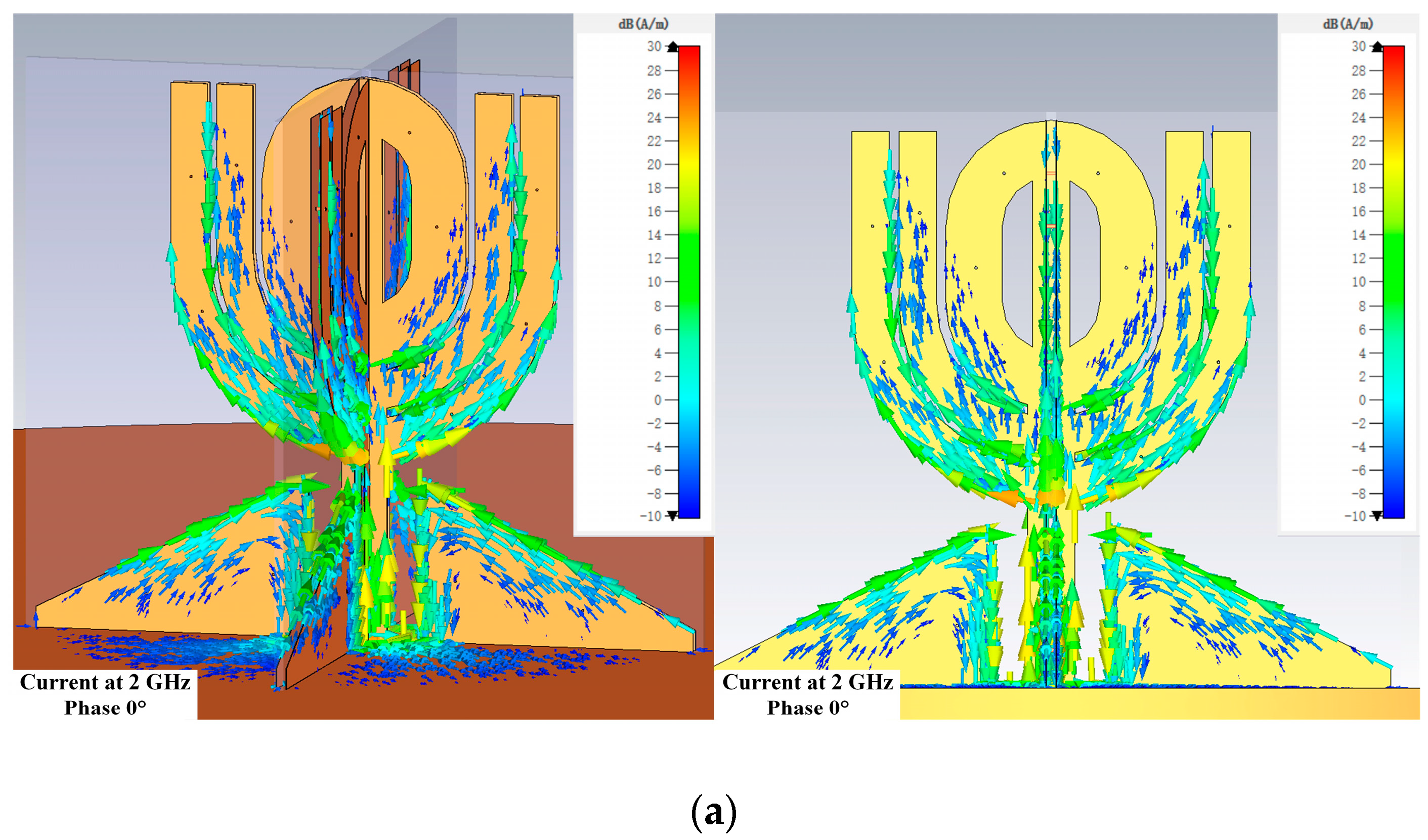
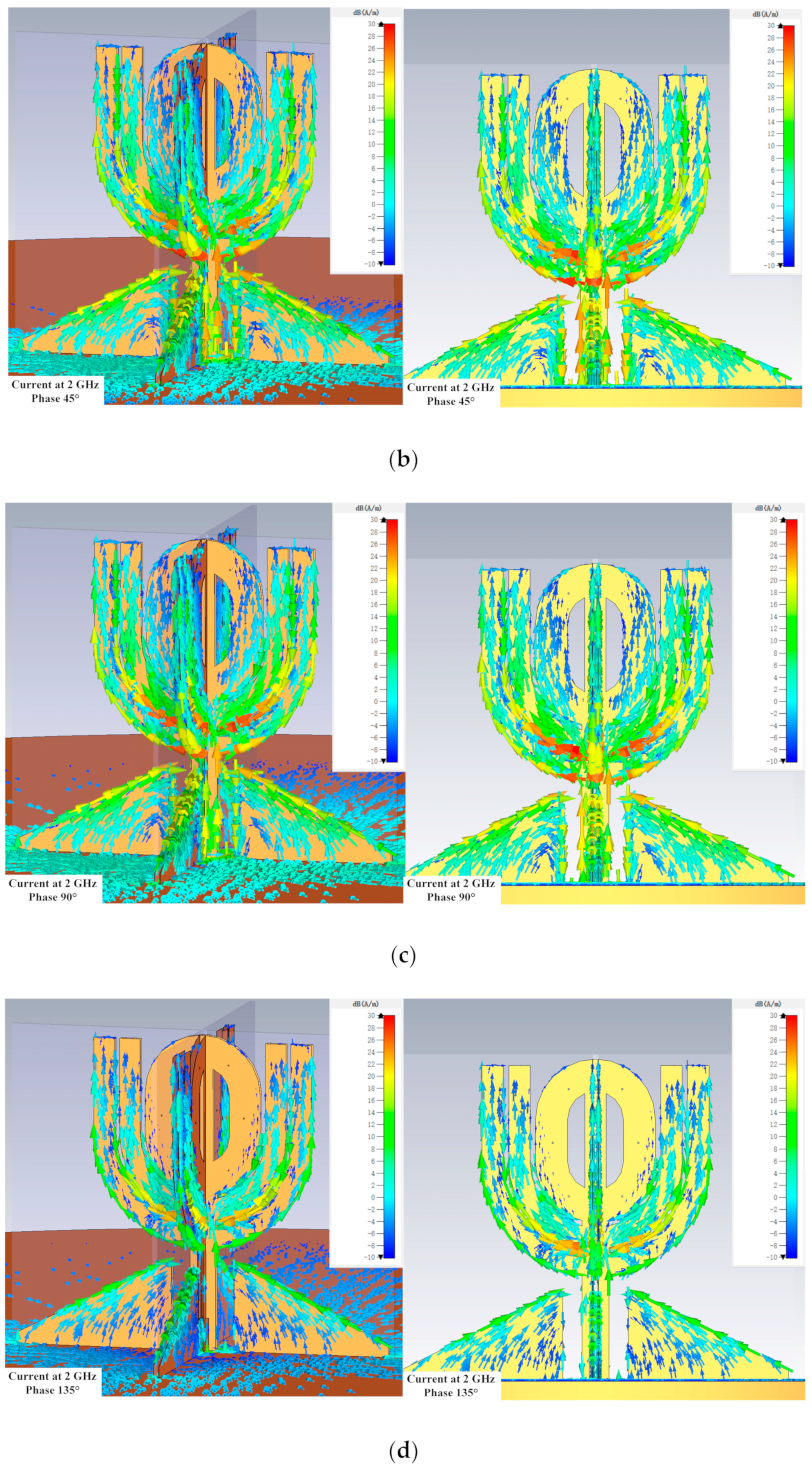

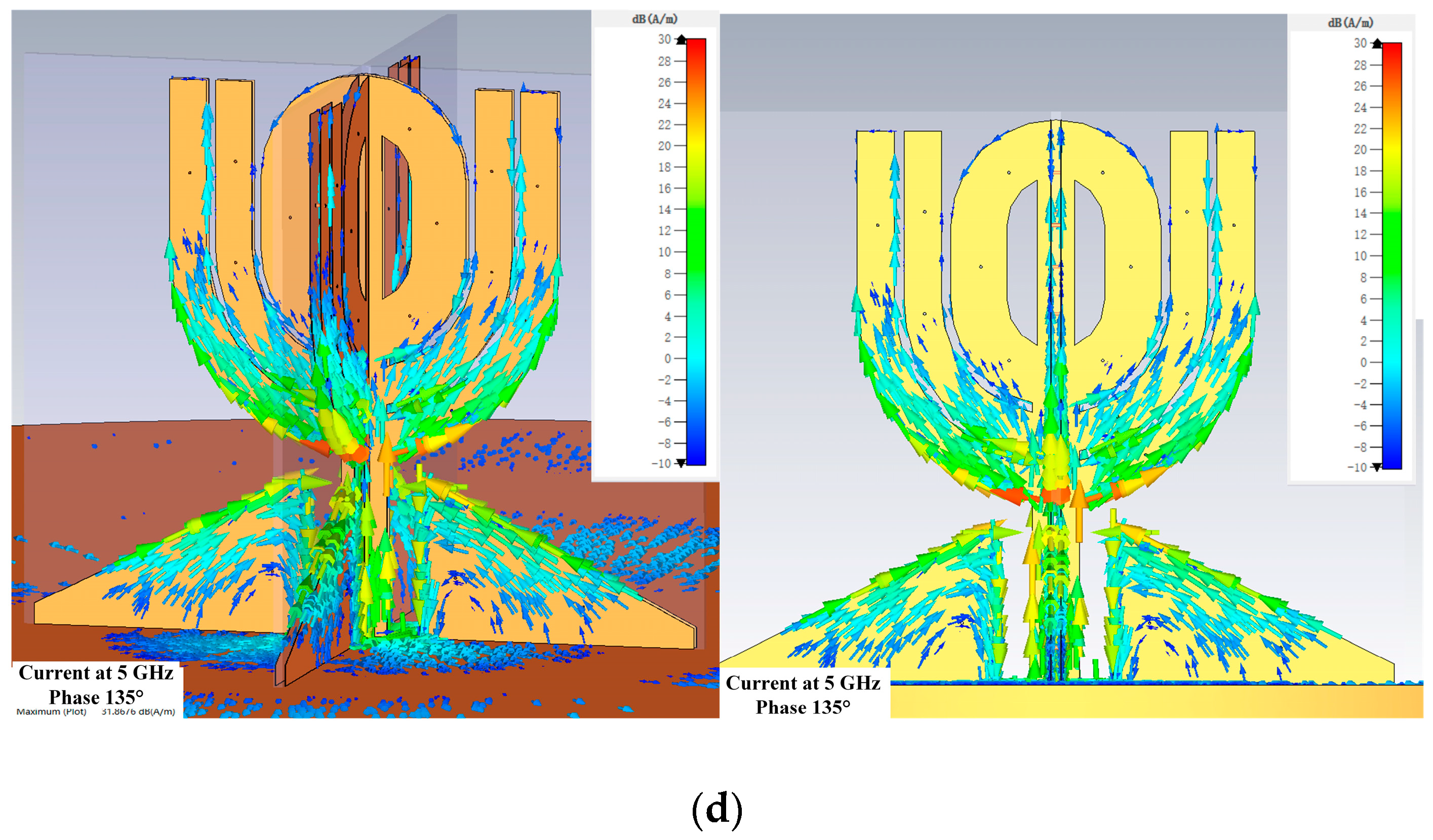
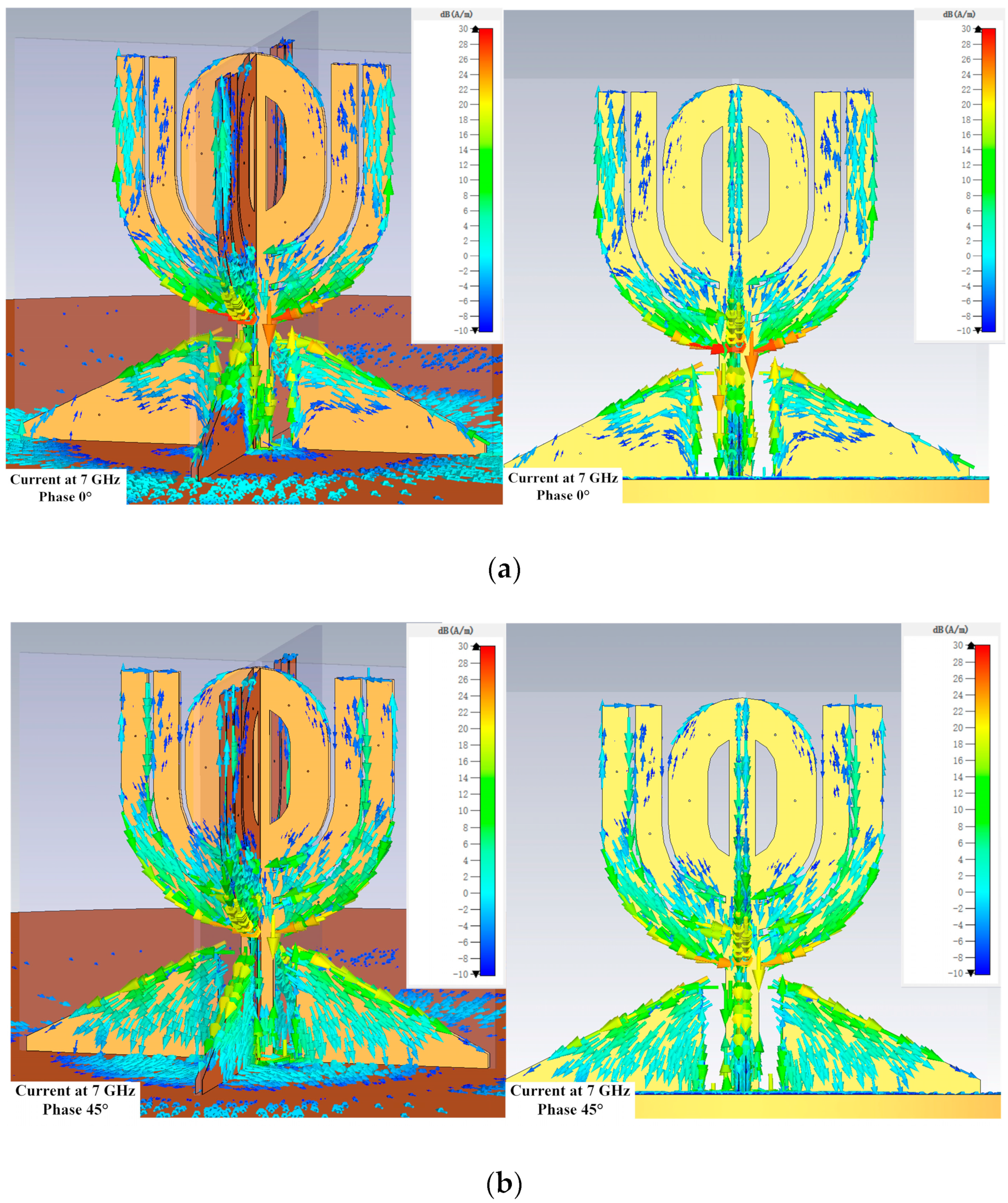
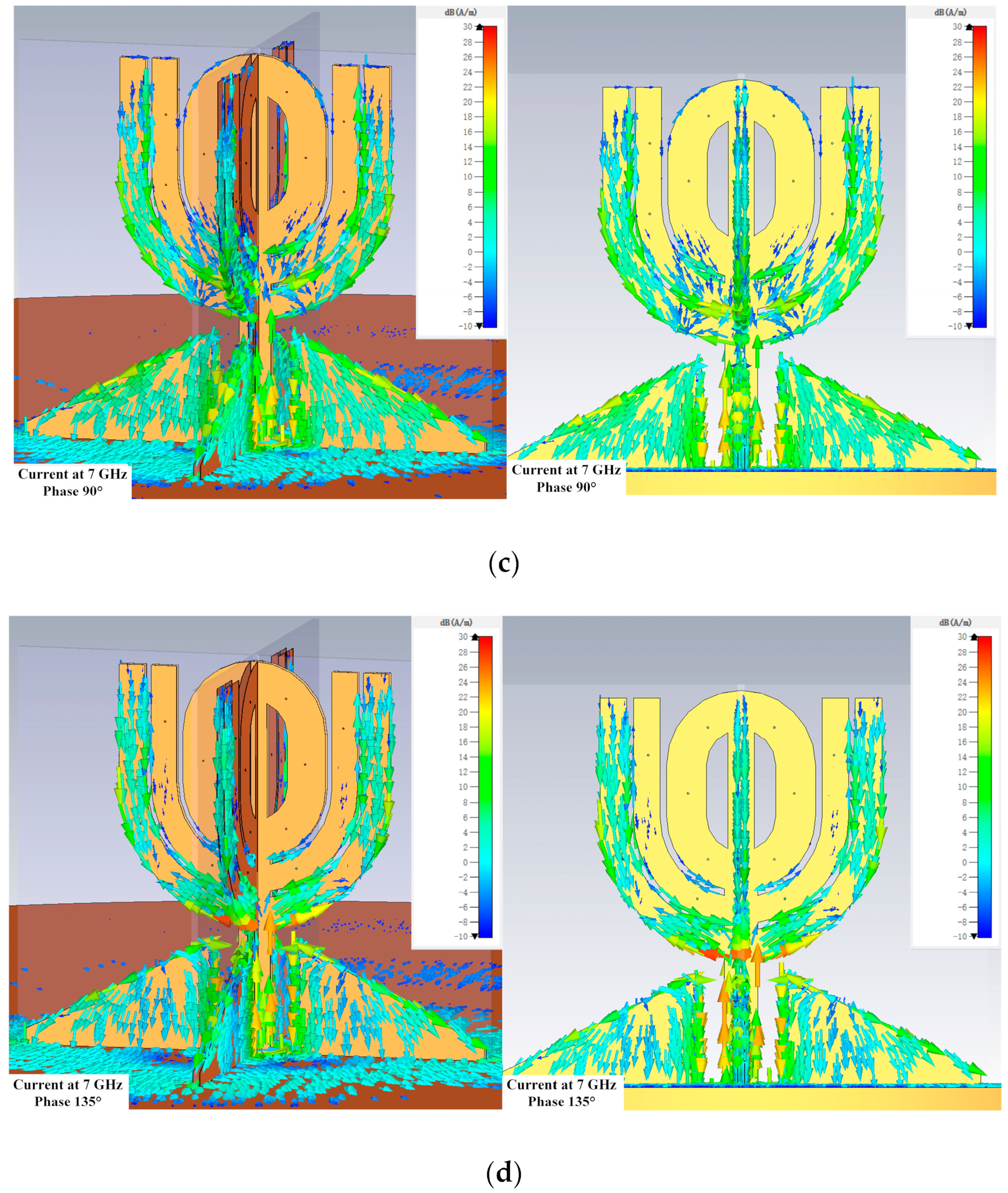

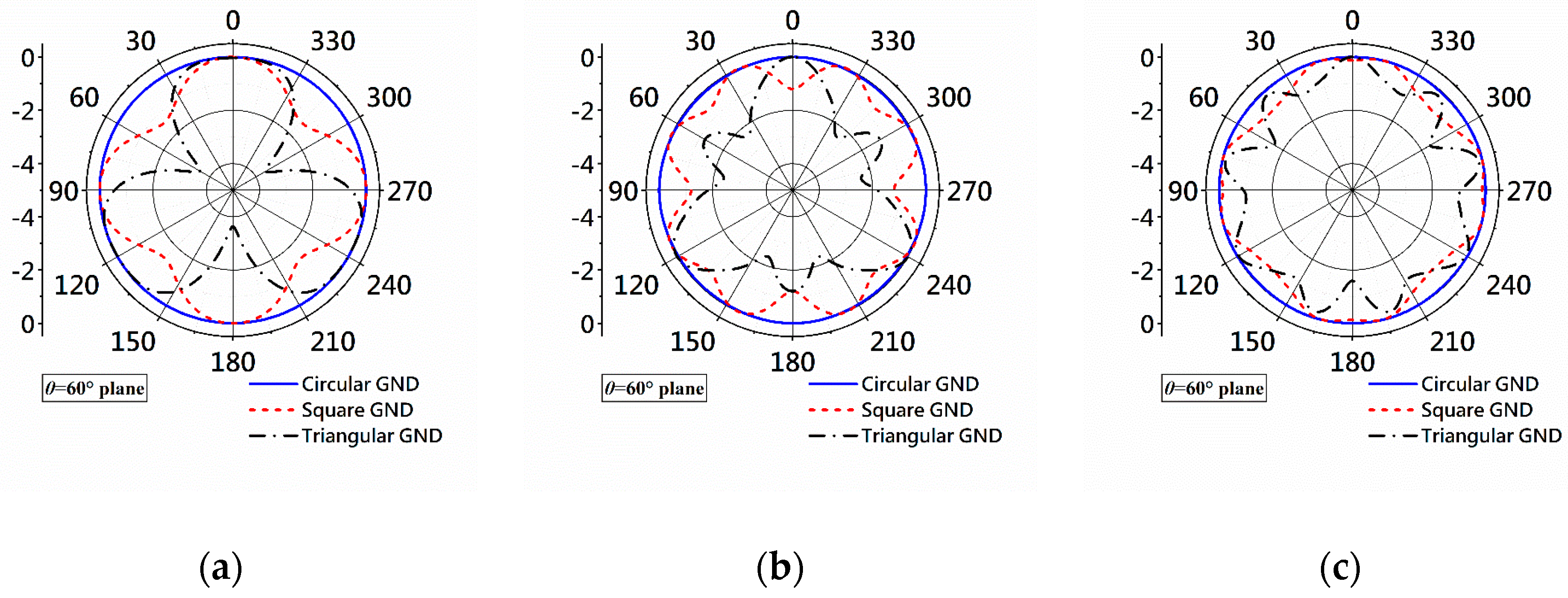
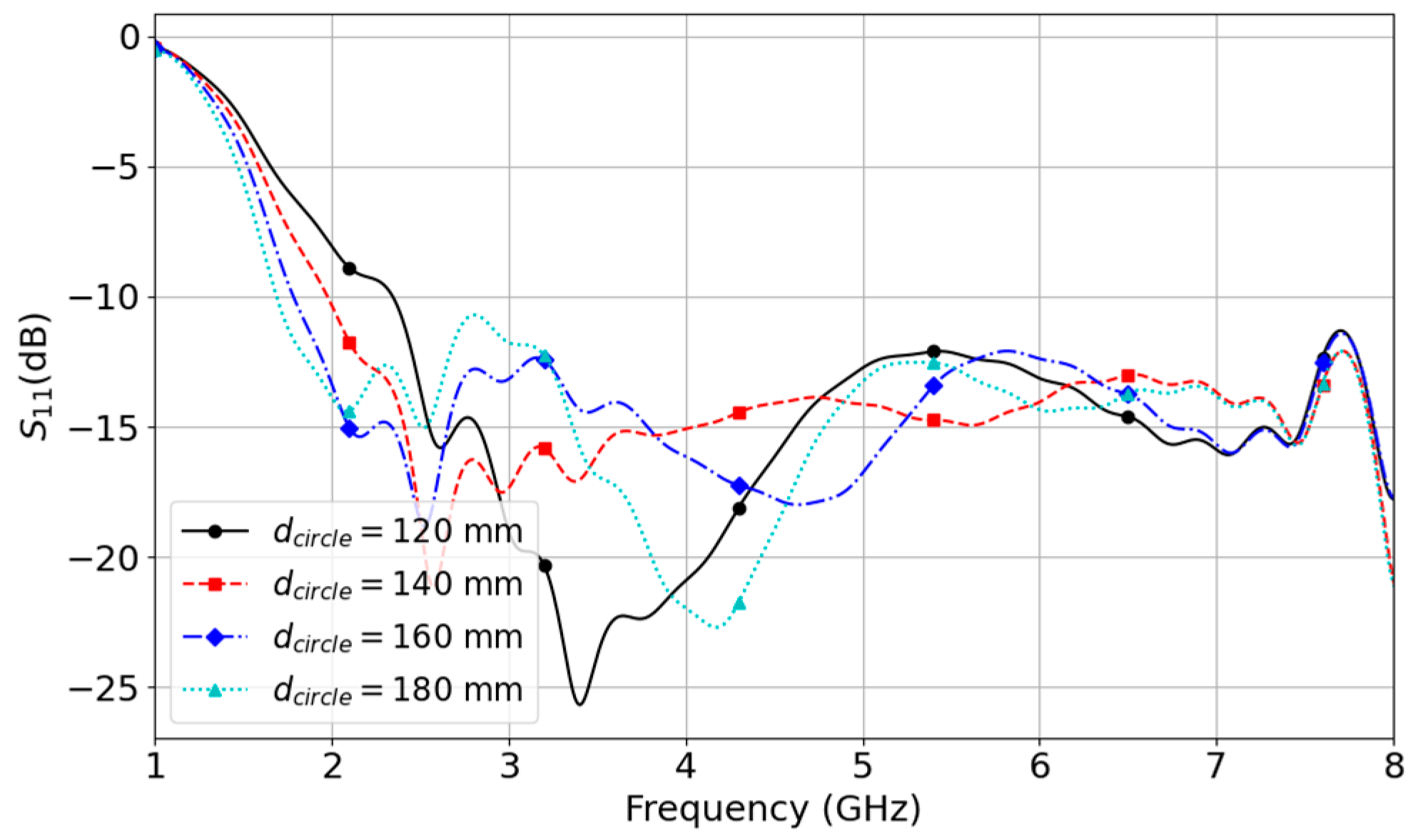
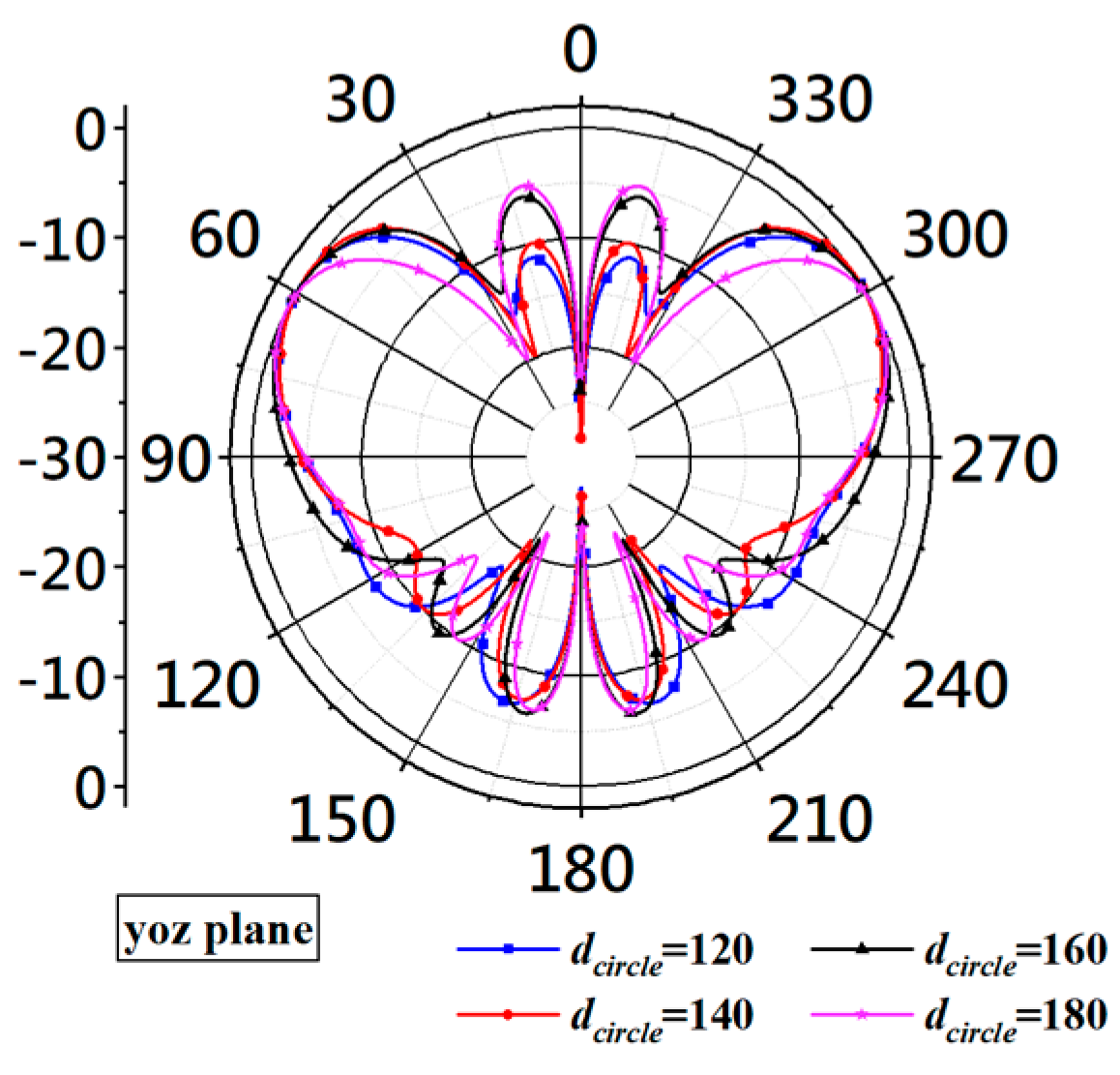

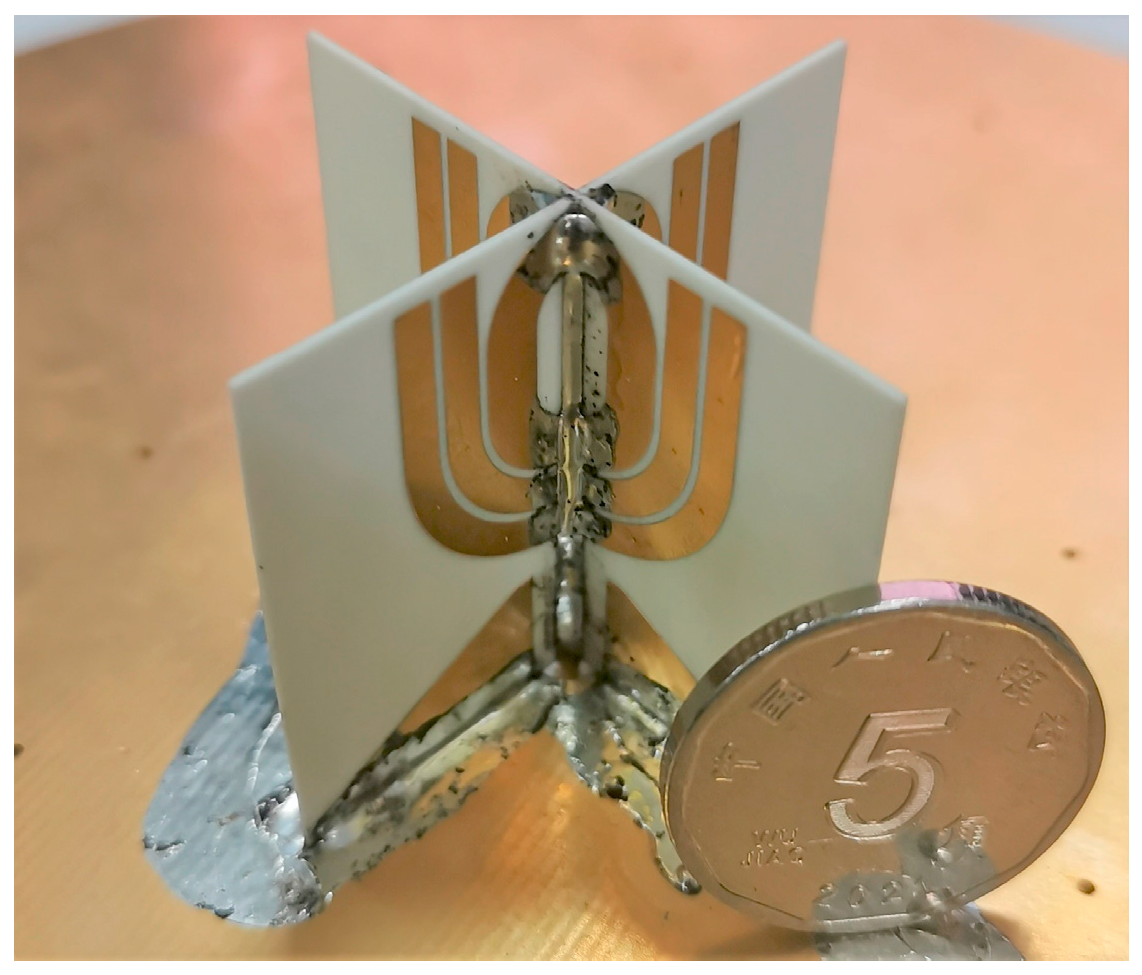


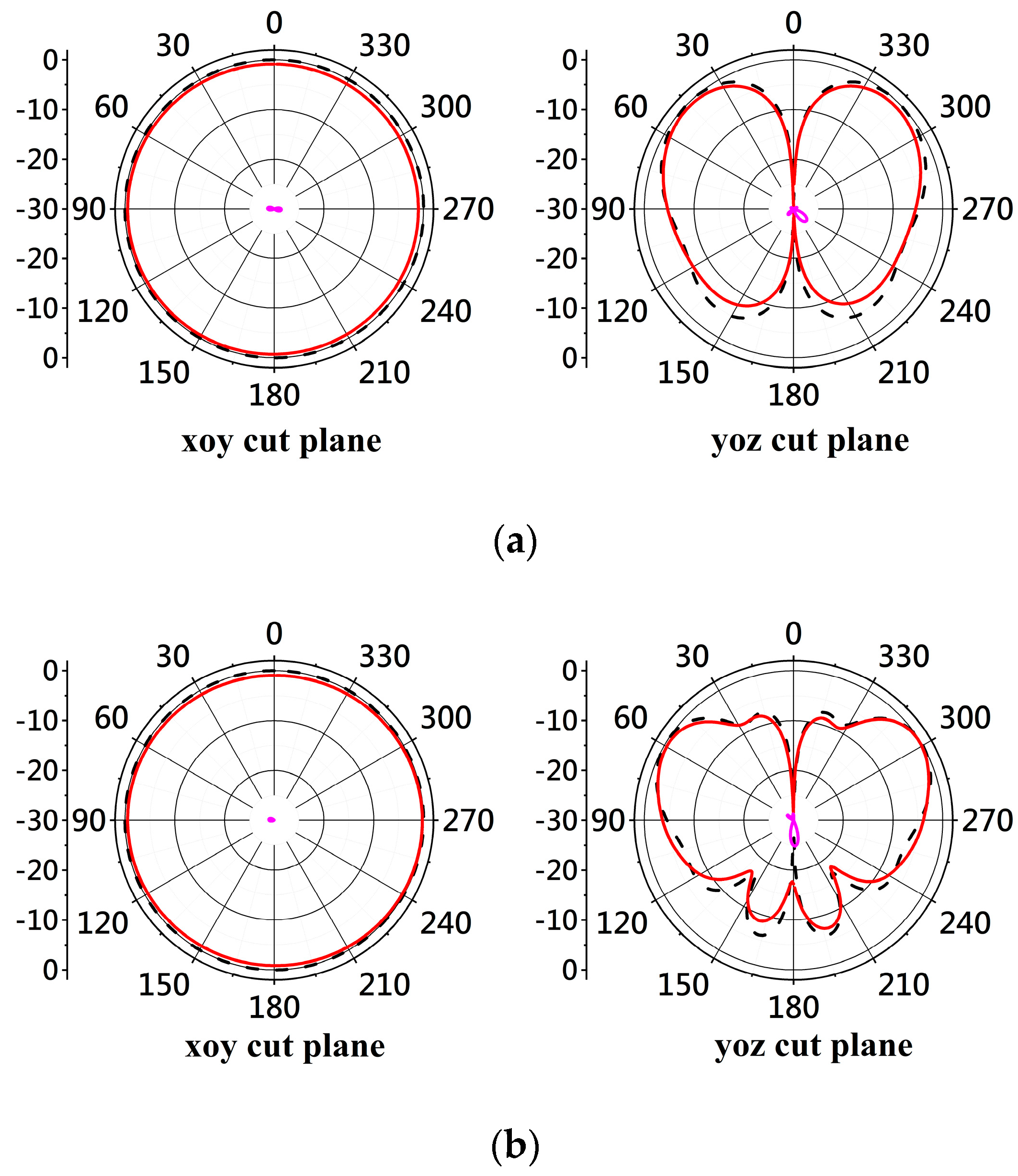

| Parameter | Value (mm) | Parameter | Value (mm) |
|---|---|---|---|
| L | 37.2 | W3 | 1 |
| H1 | 30.5 | W4 | 2.5 |
| H2 | 8.1 | W5 | 2 |
| H3 | 1.1 | W6 | 2 |
| H4 | 9 | W7 | 2 |
| H5 | 15 | W8 | 3 |
| H6 | 4 | W9 | 0.5 |
| W1 | 15 | W10 | 0.5 |
| W2 | 1.8 | R | 5.2 |
| Ref. | Structure Type | Complexity (Material) | Freq. Range (GHz) | Fractional Bandwidth 1 | Gain (dBi) | Dimension 2 (λlow 3) | Azimuthal Gain Variation (dB) |
|---|---|---|---|---|---|---|---|
| [2] | Patch | Simple (PCB) | 4.8–11.1 | 79.4% | 2.2–8.4 | D = 0.88 H = 0.089 | 2 |
| [3] | Cylinder | Complex (Metal) | 25.6–40 | 43.9 | 9.2 | D = 4.42 H = 4.5 | 3 |
| [5] | Cylinder | Simple (PCB) | 1.35–2.54 | 61% | 0.5–1.5 | D = 0.252 H = 0.27 | 1.5 |
| [8] | Patch | Simple (PCB) | 11.6–18 | 41.6% | 4.6 (peak) | D = 2.79 H = 0.081 | 3 |
| [11] | Patch | Simple (PCB) | 2.75–7.43 | 91.9% | 1–3.8 | L = 0.32 W = 0.14 | 7 |
| [13] | Cylinder | Complex (Metal) | 0.69–2.84 | 121.5% | 3.8–7.5 | D = 0.144 H = 0.09 | 8 |
| [14] | Patch | Simple (PCB) | 0.62–2.6 | 123% | 3.64–6.42 | L = 0.155 W = 0.143 | 9 |
| [15] | Patch | Simple (PCB) | 2.85–11.85 | 122.4% | −1.2–3.2 | L = 0.266 W = 0.19 | 5 |
| [16] | Strip Wire | Complex (Metal/Plastic) | 0.22–0.95 | 127.27% | −2.4–2 | L = 0.21 W = 0.07 H = 0.04 | 5 |
| This work | Patch | Simple (PCB) | 1.8–7.77 | 124.8% | 1.24–5.44 | L = 0.223 W = 0.223, H = 0.183 | 1 |
Disclaimer/Publisher’s Note: The statements, opinions and data contained in all publications are solely those of the individual author(s) and contributor(s) and not of MDPI and/or the editor(s). MDPI and/or the editor(s) disclaim responsibility for any injury to people or property resulting from any ideas, methods, instructions or products referred to in the content. |
© 2023 by the authors. Licensee MDPI, Basel, Switzerland. This article is an open access article distributed under the terms and conditions of the Creative Commons Attribution (CC BY) license (https://creativecommons.org/licenses/by/4.0/).
Share and Cite
Zhang, H.; Fu, Z.; Hu, B.; Chen, Z.; Liao, S.; Li, B. Wideband Omnidirectional Antenna Featuring Small Azimuthal Gain Variation. Micromachines 2023, 14, 2218. https://doi.org/10.3390/mi14122218
Zhang H, Fu Z, Hu B, Chen Z, Liao S, Li B. Wideband Omnidirectional Antenna Featuring Small Azimuthal Gain Variation. Micromachines. 2023; 14(12):2218. https://doi.org/10.3390/mi14122218
Chicago/Turabian StyleZhang, Honglin, Zhenzhan Fu, Binjie Hu, Zhijian Chen, Shaowei Liao, and Bing Li. 2023. "Wideband Omnidirectional Antenna Featuring Small Azimuthal Gain Variation" Micromachines 14, no. 12: 2218. https://doi.org/10.3390/mi14122218
APA StyleZhang, H., Fu, Z., Hu, B., Chen, Z., Liao, S., & Li, B. (2023). Wideband Omnidirectional Antenna Featuring Small Azimuthal Gain Variation. Micromachines, 14(12), 2218. https://doi.org/10.3390/mi14122218








